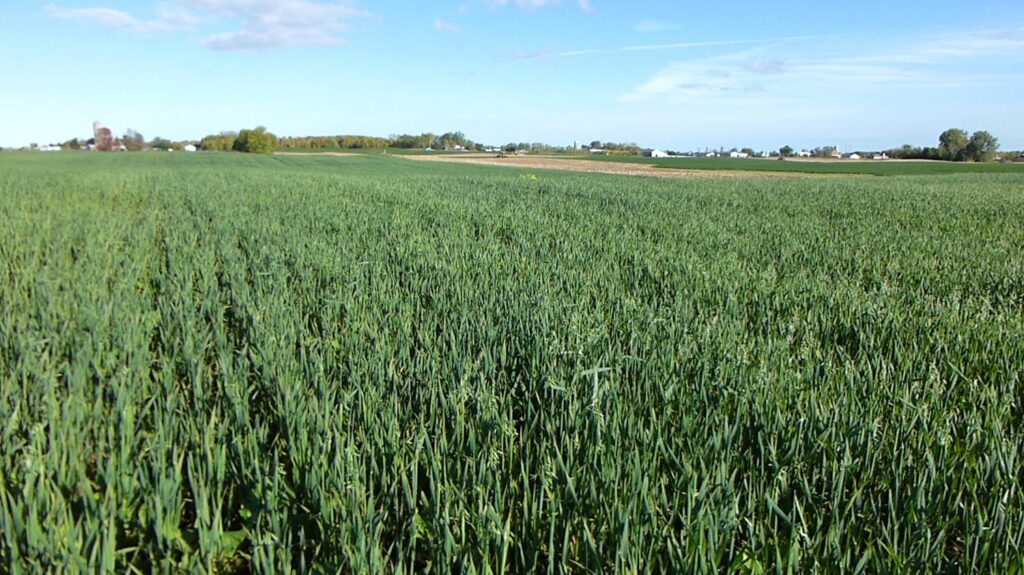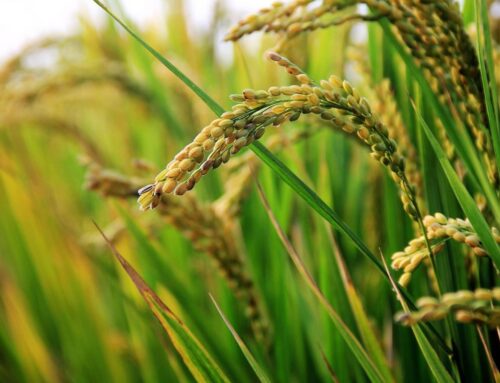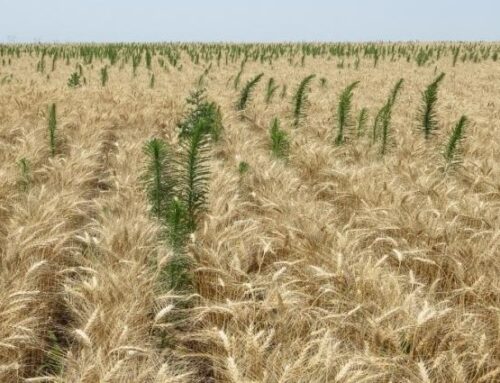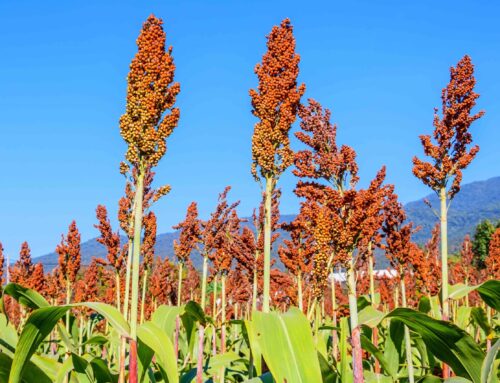
FACT OR FICTION? DO YOU KNOW THE SCIENCE BEHIND COVER CROPS?
True or false. Yes or no. Pass or fail. Farmers adopting a new practice want to know that it will work. Unfortunately, there are no black-and-white answers like the ones above when it comes to cover crops. They fit somewhere in the gray area, although not for long. Researchers have been conducting trials to understand cover crop risks and benefits in order that farmers may reduce risks and maximize benefits.
“We’re looking into cover crops because they should be considered as part of production in the Midwest,” says Alison Robertson, Iowa State University Extension plant pathologist.
Cover crops can help farmers reduce excess nutrients from leaving the field, increase soil health, and control erosion.
Still, apprehension exists. “Some farmers are reluctant to plant cover crops because of potential yield loss,” Robertson says.
Following are some facts separated from fiction when it comes to the latest research on cover crops.
FACT OR FICTION? PLANTING WINTER RYE BEFORE CORN WILL DING YIELDS.
Iowa State University (ISU) researchers conducted trials in 2014-2015 with ongoing work in 2016-2017 to determine if a winter rye cover crop planted before corn would reduce corn yields.
Multiple theories exist for the yield-loss scenario. Poor planter performance due to additional cover crop residue is one, says Tom Kaspar, a USDA plant physiologist. Another is reduced early-season nitrogen (N) availability, he adds.
Others have pointed fingers at water limitation or pests for the performance issues, says Matt Bakker, USDA research microbiologist. “But we had an alternative hypothesis.”
The researchers knew that stand establishment impacts corn yields. So they set out to see if rye caused stand loss due to soilborne pathogens that cause seedling diseases. Researchers conducted field and greenhouse trials with a goal of creating a management plan for farmers. Cool and wet soils may favor key seedling diseases that result in root rot. This can lead to seedling death or corn plants with reduced growth.
“We were able to show that winter rye is a host of the same seedling pathogens as corn,” says Robertson. Rye is a host for root rot pathogens, such as Pythium and Fusarium, which could infect young corn plants.
Pythium is the culprit they’re most concerned about. “After rye, the carpet of residue will make the soils wetter and cooler,” says Robertson. “That will favor Pythium over Fusarium.”
The scientists assumed that when the winter rye cover crop is terminated, these root rot pathogens might then infect young corn plants, so they conducted termination trials to establish if planting date made a difference. Trials looked at a spread of termination dates – from 21 days before to the day of corn planting.
“We hypothesized that when we killed the cover crop that the pathogens would come out of the cover crop roots, resulting in an increased population that would decline if no plant host was present,” says Robertson. “We found if you have a short interval between killing rye and planting corn, you increase the risk of getting the disease. If you can terminate 10 to 14 days before planting, then you will have a reduced chance of yield loss.”
“When the cover crops start to die, there’s a short window when the pathogen does really well on the dying plant,” says Bakker. The two-week interval gives enough time for the soil to warm up, and it leaves the corn plants less susceptible.
Consider the disease triangle before planting corn following a rye cover crop.
“I know from visiting farmers last year that many were planting within that risky window,” says Robertson. “You shouldn’t terminate your cover crop three days before planting. You are asking for trouble.”
Answer: Fact
When in doubt, though, Bakker recommends you terminate your cover crop when it’s smaller and delay the corn plant date until soils are warmer.
An Iowa Learning Farms study shows that cover crops increase night crawler populations by 38% vs. strips without cover crops.
FACT OR FICTION? COVER CROPS CAN SUPPRESS SOYBEAN DISEASES.
Darin Eastburn, emeritus professor of plant pathology at the University of Illinois, worked with replicated plots, consisting of rye, three different types of brassicas, and one plot left fallow as the control after harvest. He terminated the cover crops in the spring, and he evaluated soils for naturally occurring diseases. Then he inoculated with pathogens that caused root rot and sudden death syndrome (SDS).
In many cases, the research didn’t show significant differences in the level of disease in the treatments, says Eastburn. The effects the cover crop had on soybean diseases were variable. The biggest effect was noted when disease potential was high.
“In some locations, we did see significant reduction in disease,” says Eastburn.
The most significant impact was from a reduction in Rhizoctonia root rot, he says. They also witnessed a reduction of SDS in the greenhouse, but findings weren’t consistent in the field.
Based on the results, if you used cover crops to specifically manage disease, the results would probably not be as effective in controlling the disease as you would want, says Eastburn. “However, we never found that disease was more severe after cover crops compared with the fallow plots.”
There’s a possibility of adding cover crops to your toolbox to help lower disease levels. “If fields have a history with Rhizoctonia root rot, cover crops could be combined with other management strategies,” adds Eastburn.
Answer: Fact
Cover crops can be used as an additional tool to suppress soybean diseases – but results vary.
FACT OR FICTION: COVER CROPS REDUCE NITRATES IN TILE DRAINAGE.
Kaspar conducted a long-term research project on rye and oat cover crops on nitrates in tile drainage. He split the field into plots with individual tiles draining off each one and then measured the nitrate concentrations from the drainage.
“We’ve shown that we can reduce nitrate concentrations with cover crops compared with a no-till corn and soybean system,” says Kaspar.
N fertilizer isn’t the only reason for nitrate losses. Nitrate losses occurred even when no N fertilizer was applied.
“Even if we could know what the best N fertilizer rate was and we were putting on exactly the right amount per year, we still couldn’t completely reduce N losses to the levels people would like to see for water quality,” says Kaspar.
Answer: Fact
A cover crop planted after harvest reduces nitrate losses in tile drainage, because it takes up water and nitrates during the time of year when a lot of water is moving through the soil.
FACT OR FICTION? COVER CROPS REMOVE WATER FROM YOUR CROP.
“We found that cover crops and no-till increase soil aggregation, which leads to better aeration, water infiltration, and soil water storage,” Kaspar says.
“USDA trials showed that in five of seven years, rainfall had restored soil water used by the cover crop before the main crop was planted,” he says.
“In the other two years, soil water content was replenished by rainfall within two weeks of planting,” says Kaspar. “Then, because of the mulch on the surface and the increased water-holding capacity, soils stored more water throughout the summer months.”
Answer: Fiction
Kaspar found that soil with cover crops was able to hold an additional .33 inch of water compared with soil that didn’t have cover crops. Worried about dry spring conditions? Terminate the cover crop sooner than you would in a normal year.
FACT OR FICTION? COVER CROPS CAN IMPACT SOIL TEMPERATURES.
Soil temperatures can be a concern with cover crops, says Kaspar, “but it depends on how you’re managing them.”
Strip-till may be the answer to warming up cool early-season soils. Kaspar recommends strip-till to clear the residue away before planting.
“If you’re concerned about cool soil temperatures due to heavy residue, then clear the residue away from your seed row,” he says.
“When you look at soil temperature at seed depth in a field that’s been tilled and has no residue vs. a no-till field, at night the tilled field gets cooler than no-till. It’s only during the periods of intense solar radiation that there’s a temperature difference,” says Kaspar.
Answer: Fact
If you are already in a no-till system, the temperature may be slightly cooler with cover crops but not by a significant amount. Compared with conventionally tilled fields, the soils will be cooler with cover crops, says Kaspar.
By adding cover crops to no-till, you can reduce erosion up to an additional 50% and reduce lost soil to levels of 1 ton per acre per year. -Tom Kaspar
FACT OR FICTION? COVER CROPS ARE A HOST TO SOYBEAN CYST NEMATODES.
The first steps Greg Tylka, ISU Extension plant pathologist, took to learn about the interactions between cover crops and soybean cyst nematodes (SCN) was conducting trials in 2015 and 2016 to see if any were hosts to the parasitic roundworm.
“Sometimes we forget that SCN doesn’t just feed on soybeans,” Tylka says.
Tylka led research to test SCN and nine different legume cover crops and six different nonlegume cover crops (multiple varieties for some). Zero SCN females were found on nonlegume plants that were tested.
Almost every legume plant tested had no SCN females on them, either, with the following exceptions:
3 females on crimson clover
2 to 4 females on green peas
1 or 2 females on hairy vetch
1 or 2 females on Austrian pea
“By comparison, there were between 110 and 300 SCN females on susceptible soybeans that were included in the experiments as a check treatment,” says Tylka.
Answer: Fiction
“There is virtually no possibility that the cover crops we tested will serve as hosts for SCN,” says Tylka.
The next phase of research will be seeing if cover crops can be used to reduce SCN numbers.
Any time that a nonhost is planted, SCN population will drop. Tylka is trying to find if there’s any additional drop in population. He stresses that additional research is necessary before any recommendations can be made.
Unfortunately, we still don’t know how useful cover crops might be in reducing SCN. “We know for certain that they won’t increase populations because they aren’t a host,” says Tylka.
Since there are so many types of cover crops, no recommendation will work for all of them.
Read the original article here – https://www.agriculture.com/crops/cover-crops/what-cover-crop-research-shows




